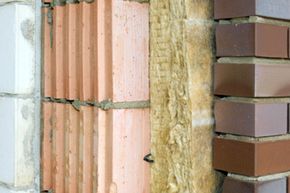Home Improvement

Insulation can help you save money and energy.
iStockphoto/Thinkstock
When building or renovating a house, there are numerous decisions to make. While the design and aesthetics of your home may be more exciting to plan, decisions such as choosing insulation are crucial for long-term efficiency and resale value. It’s important to remember that heat seeks an exit, meaning it rises to the ceiling in the winter and seeks out colder areas such as the attic, garage, or basement. Insulation type is therefore crucial for regulating temperature.
Insulation types are measured by their resistance to heat flow, known as “R-value.” The appropriate insulation type for your home may vary depending on your needs and desire for eco-friendliness. Attics typically require an R-value of R-35 to R-45, and options for insulation include spray foam, foil-faced reflective paper, polyethylene bubbles, or straw core panels. Insulated concrete forms are ideal for building new homes, while spray foam is best for maximum energy efficiency when remodeling. Loose fill cellulose or fiberglass can also be used for existing structures. Consider the age and location of your home when choosing insulation to ensure effective resistance to heat and cold air flow.
More Information
Related Articles
- How to Insulate Windows
- How Exterior Insulation and Finish Systems Work
- How Insulated Curtains Work
Sources
- Energystar.gov. “Air Seal and Insulate with ENERGY STAR.” Nov. 5, 2011. http://www.energystar.gov/index.cfm?c=home_sealing.hm_improvement_sealing
- Energysavers.gov. “Types of Insulation.” Nov. 5, 2011. http://www.energysavers.gov/your_home/insulation_airsealing/index.cfm/mytopic=11510
- Orni.gov. “Insulating a New House (Do It Right the First Time).” Nov. 5, 2011. http://www.ornl.gov/sci/roofs+walls/insulation/ins_05.html
- Therenewableplanet.com. “Choose energy efficient thermal insulation.” Nov. 5, 2011. http://www.therenewableplanet.com/green-building/energy-efficient-hvac/insulation.aspx
FAQ
1. What are the common types of insulation materials?
There are several types of insulation materials commonly used in buildings. These include fiberglass, mineral wool, cellulose, spray foam, and rigid foam. Each material has its own advantages and disadvantages, and the choice of material depends on factors such as cost, thermal performance, and ease of installation.
2. Which insulation material has the highest R-value?
The R-value is a measure of the insulation material’s thermal resistance, or its ability to resist heat flow. Among the common insulation materials, spray foam typically has the highest R-value per inch of thickness. However, it is also the most expensive and difficult to install. Fiberglass and cellulose have lower R-values but are more affordable and easier to install.
3. What is the most environmentally friendly insulation material?
The most environmentally friendly insulation material is one that is made from renewable or recycled materials and has a low environmental impact during production and disposal. Cellulose insulation, which is made from recycled paper and treated with borate for fire resistance, is considered one of the most eco-friendly insulation options. Wool insulation, which is made from sheep’s wool, is also a sustainable and biodegradable option.
4. Can insulation materials cause health problems?
Some insulation materials can cause health problems if not installed properly or if they are damaged and release fibers or particles into the air. Fiberglass and mineral wool can irritate the skin, eyes, and respiratory system, while spray foam can release toxic fumes during installation. It is important to follow safety guidelines and wear protective gear when installing insulation, or hire a professional to do the job.
5. How long does insulation last?
The lifespan of insulation depends on several factors, such as the type of material, the quality of installation, and the conditions in the building. Fiberglass and cellulose insulation can last up to 50 years, while spray foam and rigid foam can last up to 80 years. Proper maintenance and regular inspections can help extend the lifespan of insulation and ensure that it continues to perform effectively.

Brody is a skilled craftsman and gardening expert. From renovating living spaces to cultivating lush gardens, Brody’s knowledge and passion shine through, inspiring readers to embark on their own home improvement and gardening journeys with confidence.






Leave a Reply